Parwant Ghuman
A Novel Generative Neural Approach for InSAR Joint Phase Filtering and Coherence Estimation
Jan 27, 2020


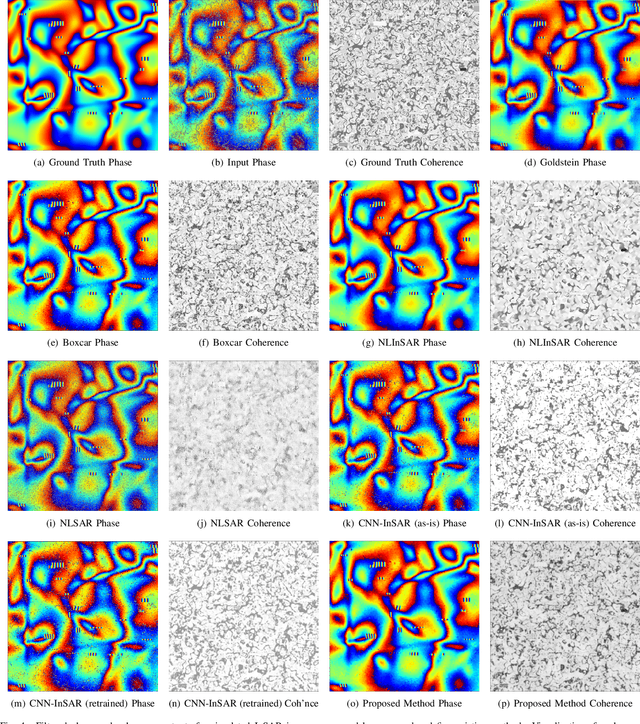
Abstract:Earth's physical properties like atmosphere, topography and ground instability can be determined by differencing billions of phase measurements (pixels) in subsequent matching Interferometric Synthetic Aperture Radar (InSAR) images. Quality (coherence) of each pixel can vary from perfect information (1) to complete noise (0), which needs to be quantified, alongside filtering information-bearing pixels. Phase filtering is thus critical to InSAR's Digital Elevation Model (DEM) production pipeline, as it removes spatial inconsistencies (residues), immensely improving the subsequent unwrapping. Recent explosion in quantity of available InSAR data can facilitate Wide Area Monitoring (WAM) over several geographical regions, if effective and efficient automated processing can obviate manual quality-control. Advances in parallel computing architectures and Convolutional Neural Networks (CNNs) which thrive on them to rival human performance on visual pattern recognition makes this approach ideal for InSAR phase filtering for WAM, but remains largely unexplored. We propose "GenInSAR", a CNN-based generative model for joint phase filtering and coherence estimation. We use satellite and simulated InSAR images to show overall superior performance of GenInSAR over five algorithms qualitatively, and quantitatively using Phase and Coherence Root-Mean-Squared-Error, Residue Reduction Percentage, and Phase Cosine Error.
CNN-based InSAR Coherence Classification
Jan 20, 2020



Abstract:Interferometric Synthetic Aperture Radar (InSAR) imagery based on microwaves reflected off ground targets is becoming increasingly important in remote sensing for ground movement estimation. However, the reflections are contaminated by noise, which distorts the signal's wrapped phase. Demarcation of image regions based on degree of contamination ("coherence") is an important component of the InSAR processing pipeline. We introduce Convolutional Neural Networks (CNNs) to this problem domain and show their effectiveness in improving coherence-based demarcation and reducing misclassifications in completely incoherent regions through intelligent preprocessing of training data. Quantitative and qualitative comparisons prove superiority of proposed method over three established methods.
CNN-based InSAR Denoising and Coherence Metric
Jan 20, 2020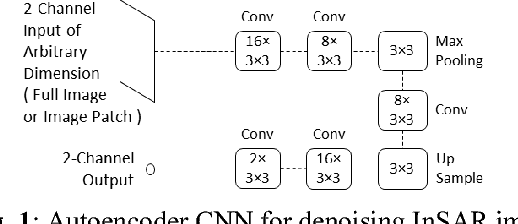
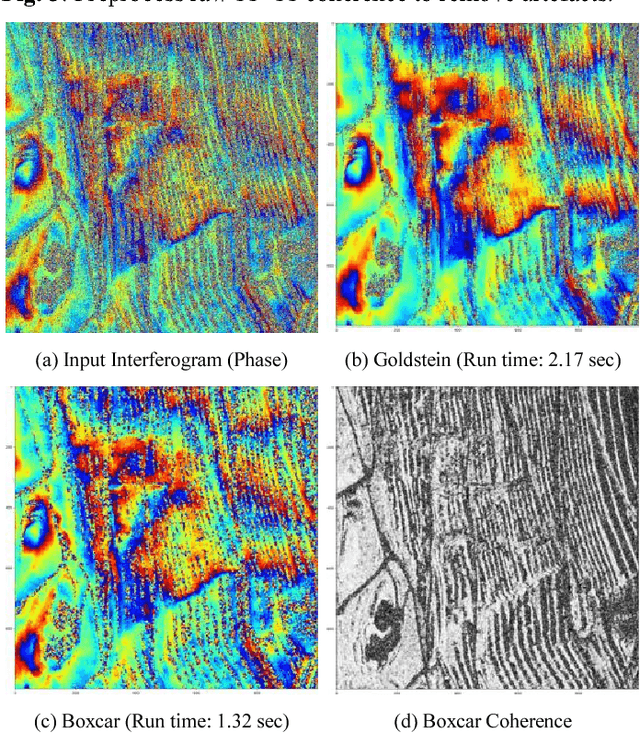
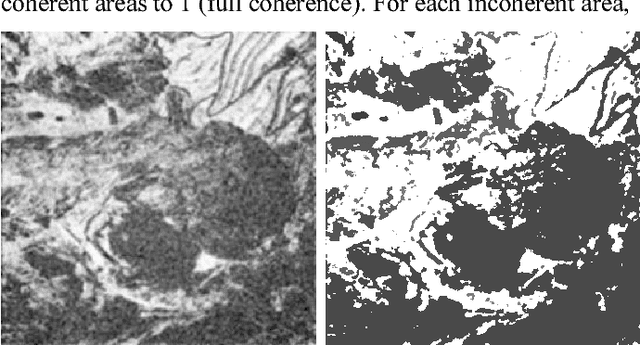
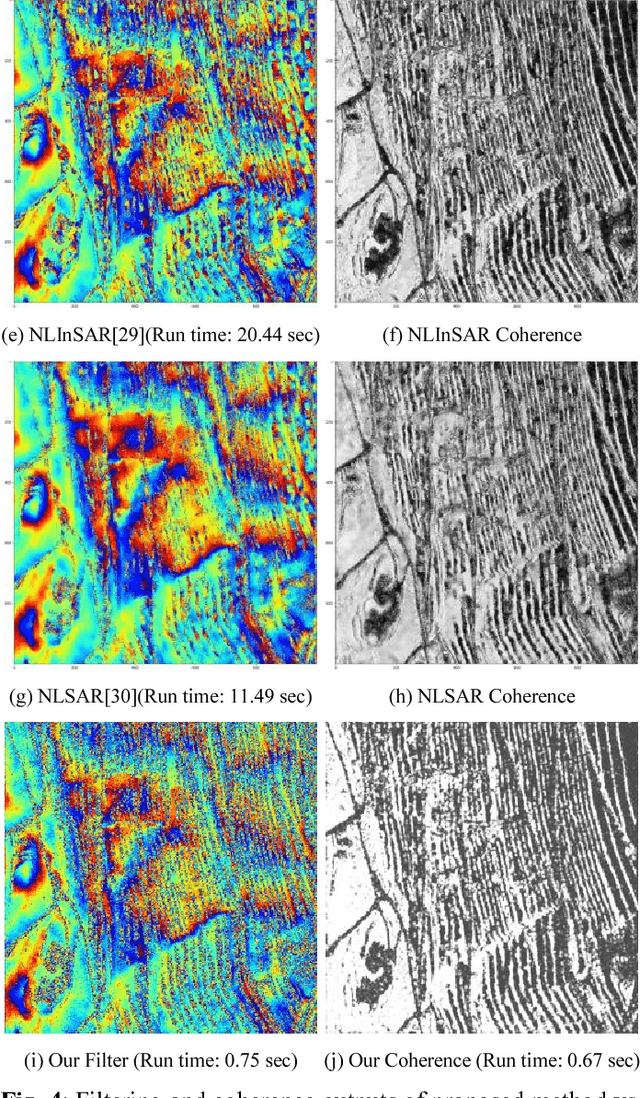
Abstract:Interferometric Synthetic Aperture Radar (InSAR) imagery for estimating ground movement, based on microwaves reflected off ground targets is gaining increasing importance in remote sensing. However, noise corrupts microwave reflections received at satellite and contaminates the signal's wrapped phase. We introduce Convolutional Neural Networks (CNNs) to this problem domain and show the effectiveness of autoencoder CNN architectures to learn InSAR image denoising filters in the absence of clean ground truth images, and for artefact reduction in estimated coherence through intelligent preprocessing of training data. We compare our results with four established methods to illustrate superiority of proposed method.
DeepInSAR: A Deep Learning Framework for SAR Interferometric Phase Restoration and Coherence Estimation
Sep 06, 2019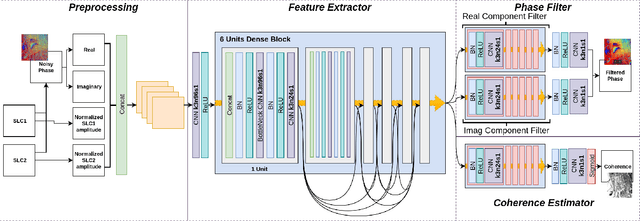
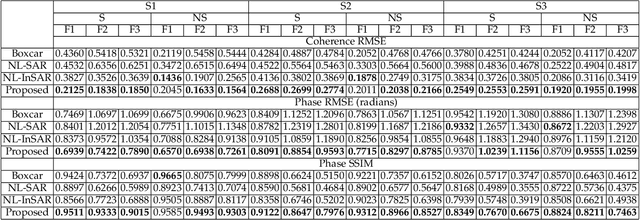
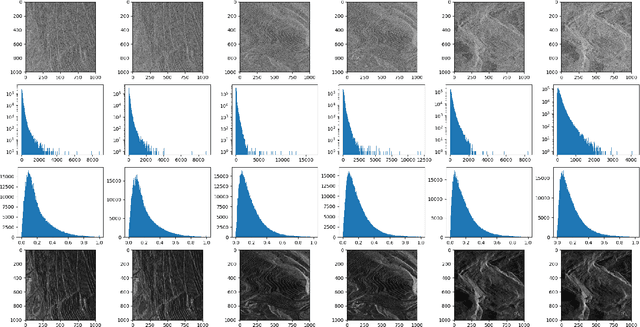
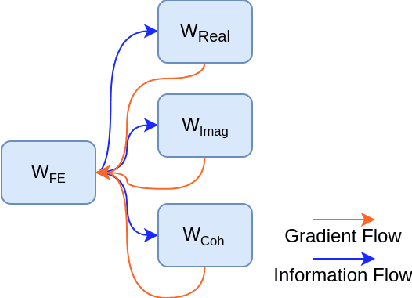
Abstract:Over the past decade, Interferometric Synthetic Aperture Radar (InSAR) has become a successful remote sensing technique. However, during the acquisition step, microwave reflections received at satellite are usually disturbed by strong noise, leading to a noisy single-look complex (SLC) SAR image. The quality of their interferometric phase is even worse. InSAR phase filtering is an ill-posed problem and plays a key role in subsequent processing. However, most of existing methods usually require expert supervision or heavy runtime, which limits the usability and scalability for practical usages such as wide-area monitoring and forecasting. In this work, we propose a deep convolutional neural network (CNN) based model DeepInSAR to intelligently solve both the phase filtering and coherence estimation problems. We demonstrate our DeepInSAR using both simulated and real data. A teacher-student framework is proposed to deal with the issue that there is no ground truth sample for real-world InSAR data. Quantitative and qualitative comparisons show that DeepInSAR achieves comparable or even better results than its stacked-based teacher method on new test datasets but requiring fewer pairs of SLCs as well as outperforms three other established non-stack based methods with less running time and no human supervision.
 Add to Chrome
Add to Chrome Add to Firefox
Add to Firefox Add to Edge
Add to Edge